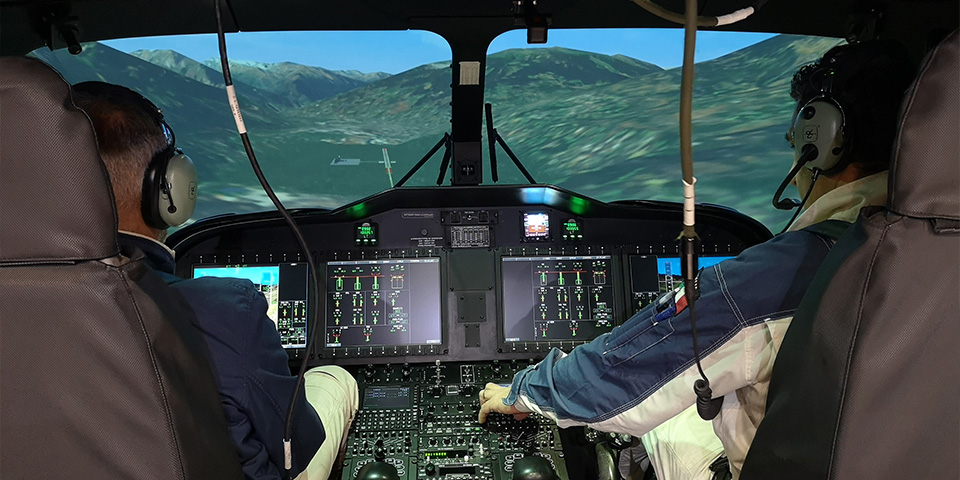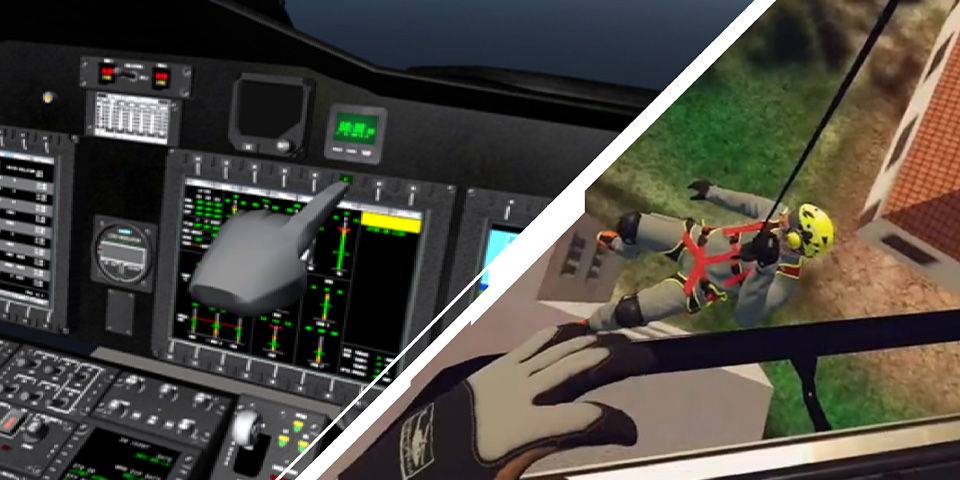To support our customers’ evolving operational and training needs, advanced simulation technologies play a central role in our comprehensive suite of training courses, enabling crews to hone their skills in a highly realistic synthetic environment.
Our wider capability to deliver fully immersive operational training for pilots and rear crews, including hoist operators, rescue and medical personnel, encompass every stage of the training process from ab initio through to advanced and recurrent training. Operational training also includes on-type cabin familiarisation, safety procedures, all types of rescue scenarios and all-weather training. In addition, operators can conduct multi-crew immersive training that uses an interlink between Leonardo Helicopters simulators for a collaborative training approach.
VP of Simulation and Training Services Paolo Petrosso comments: “With rapid developments in areas such as Artificial Intelligence (AI) and virtual reality, we are harnessing simulation to offer operators significant benefits in terms of safety, time, operational effectiveness and connectivity. One highly significant aspect for Leonardo Helicopters is that our simulation and training solutions are based on direct access to original OEM data. This ensures the highest possible fidelity and ensures that the training experience is fully representative of the actual helicopter.
“Being an OEM with full in-house design and integration capability, we apply our expertise at every stage of the simulation process from design, through manufacturing, delivery, qualification, operation and support.
“Virtual reality, augmented reality and mixed reality are having a positive impact on the way we conduct helicopter training because we now have the ability to blend these approaches with live flight training to enable crews to practise standard and emergency scenarios in a safe, immersive and highly realistic environment. The techniques also enhance the safety and effectiveness of rear crew training.”

Safety focus: Upset Prevention Recovery Training course
The complexity and demands of the operating environment for our helicopters are increasing all the time – which means that our investment in high quality training pathways and advanced technologies play a vital role in increasing operational safety.
Analysis of safety data shows that Loss of Control In-flight (LOC-I) remains one of the most significant contributors to fatal accidents in commercial, corporate and general aviation. LOC-I incidents also typically lead to more serious accidents with higher numbers of fatalities in a single event.
Despite this, there are currently no provisions for the helicopter community relating to Upset Prevention Recovery Training (UPRT) within the FAA/EASA regulatory framework for pilot training. So, against this backdrop, we launched a programme to develop our first ever UPRT course designed specifically to equip pilots with the knowledge and skills to prevent upsets and to guide their response to upset incidents that pose a potential threat to flight safety.
The three-day course took place for the first time in November, combining theoretical, in-flight and FFS training, and was the first of its kind developed by a rotary wing OEM. We welcomed personnel from the Italian Army, the Italian Coast Guard, Italian firefighting crews as well as representatives from an Italian civil operator. Further courses will be available to Leonardo Helicopters operators and partners into 2024 as the UPRT programme is rolled out more widely.
Speaking about the significance of the UPRT programme, Paolo Petrosso explains: “Many steps have already been taken to introduce sophisticated onboard systems to improve situational awareness, such as H-TAWS, however it is equally important to invest in enhancing the skills and experience of the human side of the equation through the mechanism of pilot training.
“Providing valuable hands-on training, we also aim to establish industry-wide consensus on effective methods for pilots to enhance their ability to recognise and avoid situations that may lead to aircraft upset.” 

